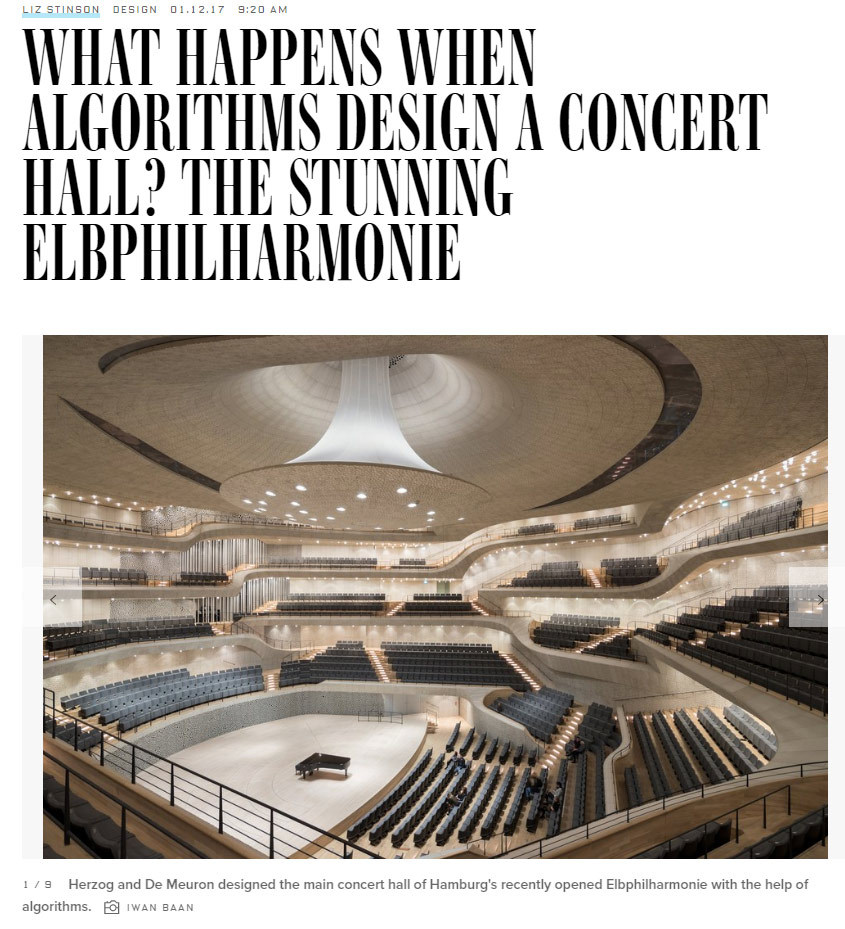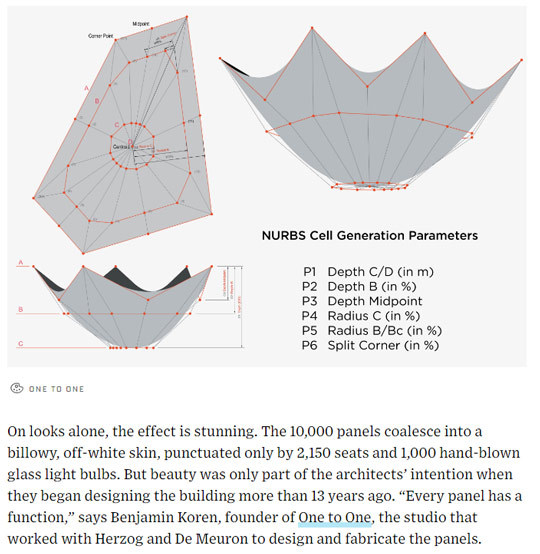

Elbphilharmonie
Another practical use for procedural generation: to make 10,000 unique acoustic panels for a concert hall.
The recently finished concert hall uses algorithmically-designed paneling (via the computational geometry of 1:One, who specialize in similar architecture and sculpture):
Using these requirements as parameters, Koren developed an algorithm that produced 10,000 panels, each with a unique shape and pattern, mapped to clear aesthetic and acoustic specifications. “That’s the power of parametric design,” he says. “Once all of that is in place, I hit play and it creates a million cells, all different and all based on these parameters. I have 100 percent control over setting up the algorithm, and then I have no more control.”
Which reminds me a bit of the generation of the Deep Note, and in a more general sense, the use of procedural generation to create designs that are too complex for humans to create or describe by hand.
It also suggests that we’re entering an era where design is too complex for humans to easily describe. Historically, the mathematical models used in architecture were complex but were able to be reduced to simple algorithms. For example,
Vitruvius’s description of the proportions of a column.
But, similar to computer-assisted proofs in mathematics, we can now design things with properties we don’t fully understand. No human knows the exact effect of each panel in the concert hall. No person has a complete model of the results in their head.
Of course, we could still reverse engineer it, treating it as an enormous puzzle. But that just emphasizes that our centaur design methods are now capable of creating results more complex than humans can imagine in detail.
